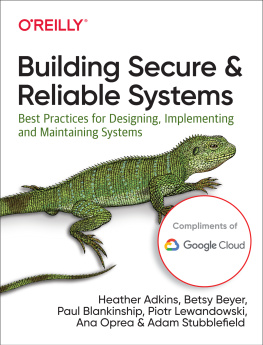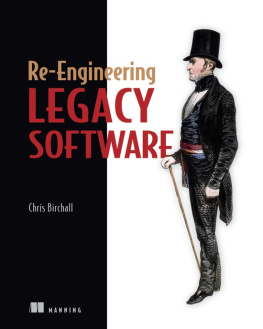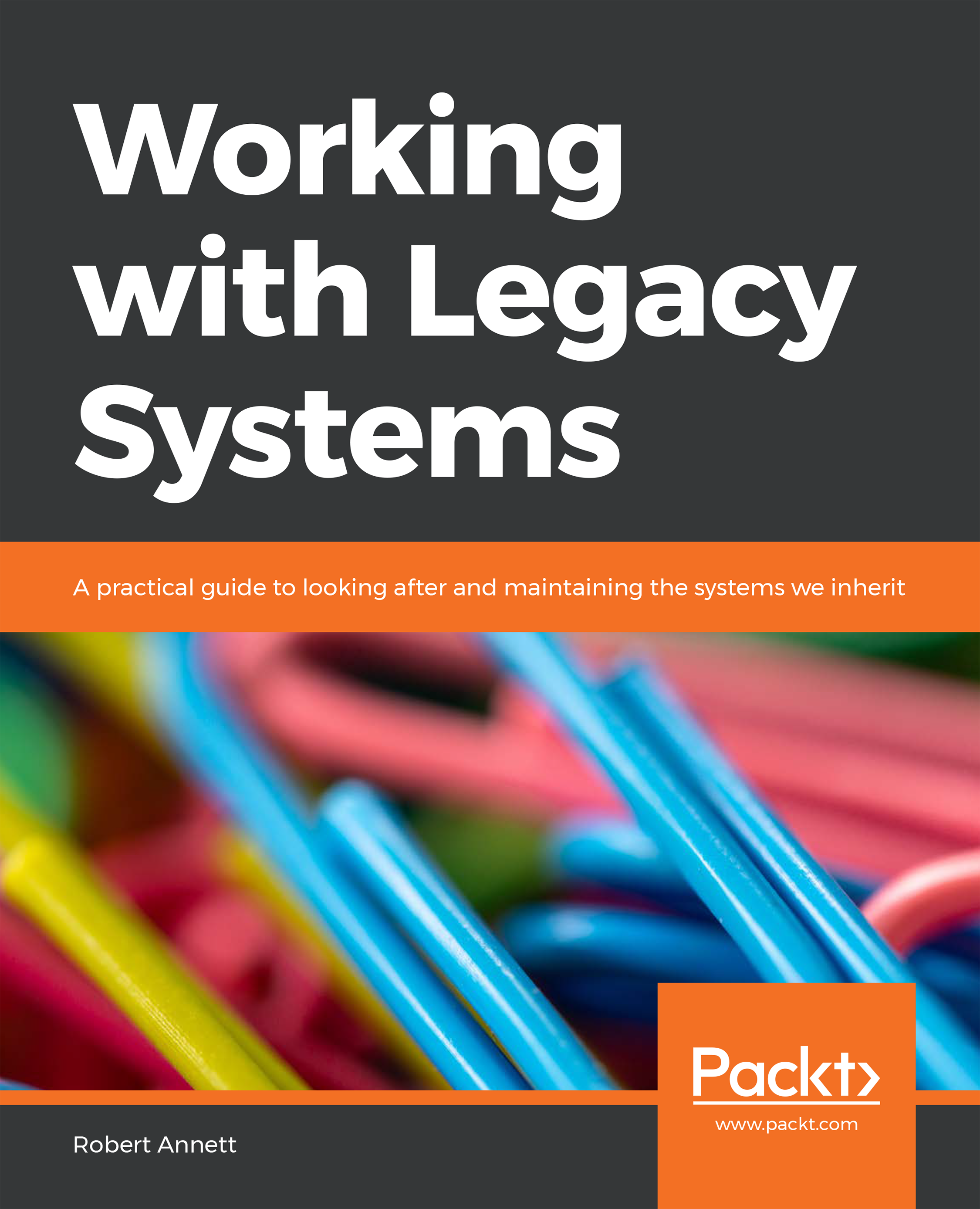Robert Annett - Working with Legacy Systems: A practical guide to looking after and maintaining the systems we inherit
Here you can read online Robert Annett - Working with Legacy Systems: A practical guide to looking after and maintaining the systems we inherit full text of the book (entire story) in english for free. Download pdf and epub, get meaning, cover and reviews about this ebook. year: 2019, publisher: Packt Publishing, genre: Computer. Description of the work, (preface) as well as reviews are available. Best literature library LitArk.com created for fans of good reading and offers a wide selection of genres:
Romance novel
Science fiction
Adventure
Detective
Science
History
Home and family
Prose
Art
Politics
Computer
Non-fiction
Religion
Business
Children
Humor
Choose a favorite category and find really read worthwhile books. Enjoy immersion in the world of imagination, feel the emotions of the characters or learn something new for yourself, make an fascinating discovery.

- Book:Working with Legacy Systems: A practical guide to looking after and maintaining the systems we inherit
- Author:
- Publisher:Packt Publishing
- Genre:
- Year:2019
- Rating:4 / 5
- Favourites:Add to favourites
- Your mark:
Working with Legacy Systems: A practical guide to looking after and maintaining the systems we inherit: summary, description and annotation
We offer to read an annotation, description, summary or preface (depends on what the author of the book "Working with Legacy Systems: A practical guide to looking after and maintaining the systems we inherit" wrote himself). If you haven't found the necessary information about the book — write in the comments, we will try to find it.
Understand the crux of legacy systemstheir architecture, analysis, and security constraints
Key FeaturesThe IT industry is constantly evolving with the introduction of new technologies. While it is important to keep up with advancements, maintaining legacy systems is equally necessary to ensure that the infrastructure of your organization functions to the best of its ability. Sound knowledge of techniques that can be used for maintaining legacy systems can help you avoid common pitfalls.
The book begins with a quick overview of what a real legacy system looks like, how it works, and common issues that may be faced when trying to maintaining it. Youll then explore the architecture of a legacy system in detail and understand each of its components. As you progress, youll discover a variety of techniques for analyzing a legacy system and how to apply them. Once you get to grips with the security constraints associated with legacy systems, youll explore ways to secure them. Finally, youll be able to easily make changes in legacy systems to enhance their performance.
By the end of this book, youll have developed the skills and confidence to work with legacy systems and efficiently maintain them.
What you will learnIf youre new to working with legacy systems and want to understand how they work and how to maintain them, this book is for you.
Robert Annett: author's other books
Who wrote Working with Legacy Systems: A practical guide to looking after and maintaining the systems we inherit? Find out the surname, the name of the author of the book and a list of all author's works by series.








